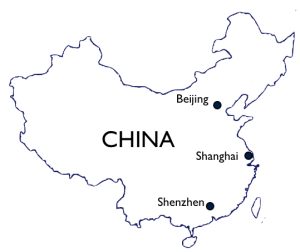Over the past decade, electronics manufacturing has largely shifted into China because of cost-savings. However, these cost-savings can often be misleading as manufacturing in China also comes with the risk of IP theft that can potentially lead to financial damages far in excess of the capital saved in manufacturing there.
As a hi-volume hardware manufacturing shipping millions of devices per year, Ubiquiti Networks partners with contract manufactures based in China. For entrepreneurs looking at manufacturing in China, I want to give some advice in hopes of preparing others for the potential dangers they may face.
Before I start, I want to point out something that is often not communicated enough to the Western World regarding business ethics and the general integrity of the justice system in China. Looking at the country of China as whole and making generalities about the business culture is somewhat unfair. It is well known that China has the largest population of any country in the world, but it is not as well known that it is very much still a country with a great range of internal variance (probably more so than any country in the World) when it comes to the evolution of business ethics and intellectual property protection amongst its 23 provinces. (to be exact, 23 provinces, 4 directly administered cities, 2 special-administered regions (HK/Macau), and 5 self-administered regions by ethnic minorities such as Tibet and Inner Mongolia)
In fact, a friend of mine in China summarized the variance best when he broke down 3 regions

-In Shanghai the attitude can best be expressed by the phrase: 上面说行才行 – meaning don’t do it unless the authorities say it’s ok to do it
-In Beijing, it’s 上面没说不行就行 – if the authorities didn’t say don’t do it, it is ok to do it
-And in Shenzhen, 上面说不行也行 – do it even if the authorities say you can’t do it
Unfortunately for Western technology companies, a large part of manufacturing today takes place in the Shenzhen region.
With that, here are my 3 pieces of advice
- Take what your contract manufacturing partner tells you with a grain of salt: When you first engage with a manufacturing partner in China, they will likely tell you “We will sign an NDA” or “we have a very strict information policy” or “we have very tight security”, etc. in an effort to make you feel comfortable that your IP can be protected in their hands. Reality often deviates from words. The motivation for factory personnel to leak IP or take their manufacturing and project experience to lucrative counterfeiter operations is very high. This is especially true if they are based in the Shenzhen region. It is therefore very important to do reality checks with your partners to make sure they have effective internal IP protection processes and are in fact doing their best to protect your IP. If they are not, it is time to change partners.
- Apply for IP registration in China in advance: Registering trademarks and patents in China is a long process that can take years. You must start this process immediately and ideally well in advance of any plans to manufacture there. Enforcing this IP in certain parts of the country can be very difficult, but there is a more important reason for filing. There will be others in China that will attempt to fraudulently file your IP once you show up on their radar and will look for ways to use it to profit at your expense.
- Use manufacturing IP to protect your product IP: This is the most valuable piece of information I can give. If you can protect your product IP at the source (manufacturing level), the potential agents of IP theft can be effectively neutralized. At Ubiquiti, we developed a powerful system of product counterfeit protection that is virtually unbreakable. It consists of (a) a security IC with a “a unique water mark signature”, (b) a software application running on a test station that loads the binary firmware image on to the hardware, and (c) a cloud based server which authorizes only stations with approved IP and MAC addresses, authenticates loading instances based on cryptography involving several dynamic values as well as the security IC signature; and logs all activity. The system also uses passwords that must be changed on a frequent basis at the manufacturing line. Using an anti-counterfeit mechanism such as the one described is your best protection against the future threat of rogue counterfeit manufacturing facilities.



Leave a comment